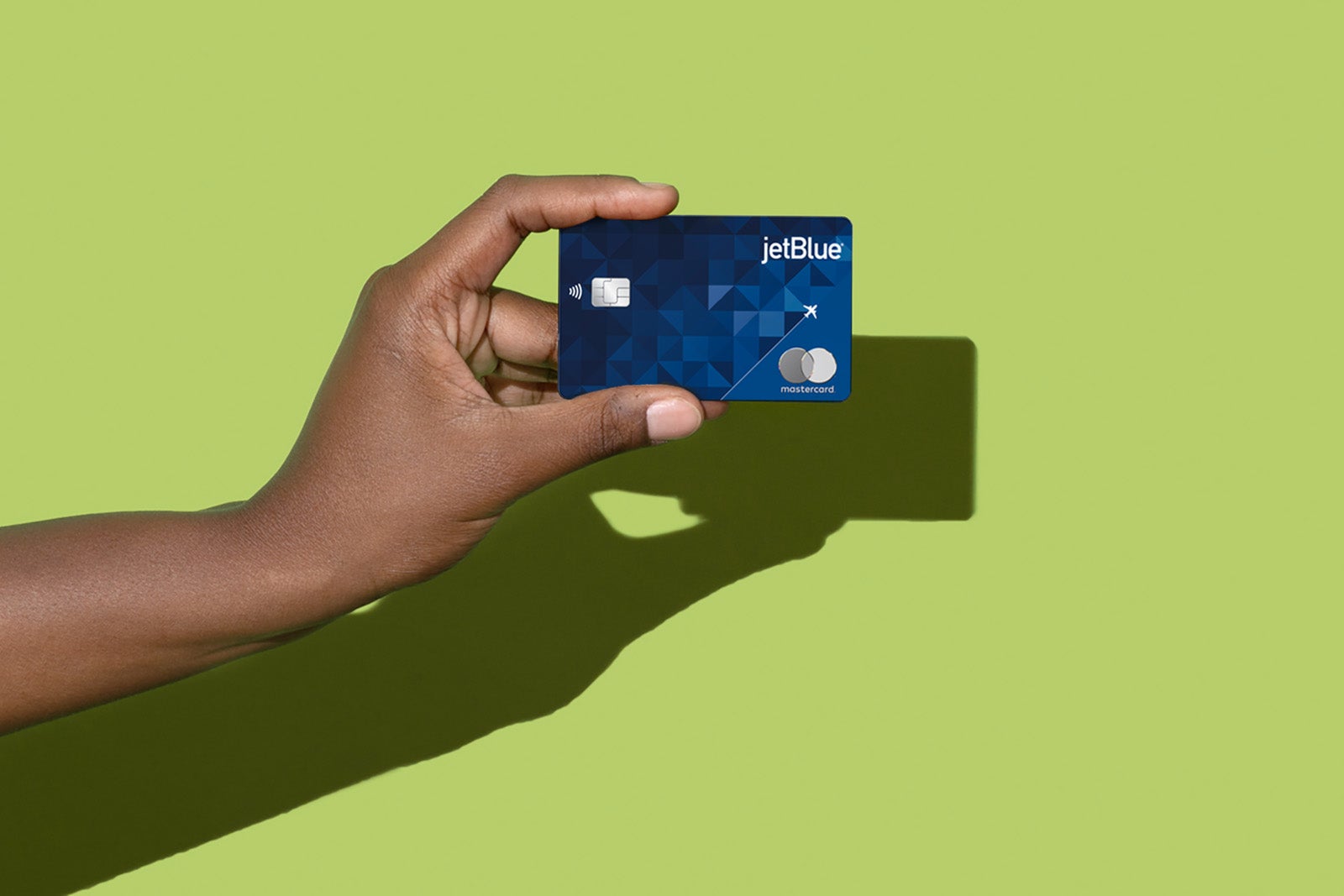JetBlue Card overview
No-annual-fee airline cards typically don’t come with many perks, and the JetBlue Card is no exception. However, with no foreign transaction fees, discounts on inflight purchases and bonus earnings on three spending categories, it’s still a decent option for occasional JetBlue travelers. However, the JetBlue Plus Card — a card that carries a $99 annual fee — is a much more compelling option. Card Rating*: ⭐⭐⭐
*Card rating is based on the opinion of TPG’s editors and is not influenced by the card issuer.
While JetBlue has historically been a smaller airline in the U.S. than the likes of American, Delta and United, the New York City-based carrier is making moves to cement itself as a major player. And with free snacks, free Wi-Fi and a reputation for customer-centric service, JetBlue has a lot going for it.
When it comes to credit cards, there are two JetBlue flavors: the no-annual-fee JetBlue card, with a recommended credit score of 670, and the $99-annual-fee JetBlue Plus card.
Today, we’re diving into the no-annual-fee JetBlue Card to see if it’s the right fit for you.
The information for the JetBlue Card and JetBlue Plus Card has been collected independently by The Points Guy. The card details on this page have not been reviewed or provided by the card issuer.
JetBlue Card pros and cons
| Pros | Cons |
|---|---|
|
|
JetBlue Card welcome offer
First, the good news is that there is a sign-up bonus on this card. However, the bad news is that the current bonus is modest at best: 10,000 bonus TrueBlue points after spending $1,000 on purchases in the first 90 days. According to TPG June 2024 valuations that peg TrueBlue points at 1.35 cents apiece, the bonus is worth just $135.
Again, JetBlue’s other credit card option — the JetBlue Plus card — is a much more compelling option if a generous sign-up bonus is what you’re after.
Related: How to maximize 100,000 JetBlue TrueBlue points

Daily Newsletter
Reward your inbox with the TPG Daily newsletter
Join over 700,000 readers for breaking news, in-depth guides and exclusive deals from TPG’s experts
JetBlue Card benefits
The JetBlue Card’s list of perks and benefits is fairly slim, which is unsurprising for a no-annual-fee card.
One of the top advantages of this card is a 50% inflight savings on food and beverage purchases when you use the card to pay.
Additionally, the JetBlue card has no foreign transaction fees, $0 liability protection, EMV chip technology and 0% introductory APR for balance transfers for the first 12 billing cycles.
Earning points on the JetBlue Card
On the earning side, you’ll get 3 TrueBlue points per dollar on JetBlue purchases, 2 points per dollar on restaurants and grocery stores and 1 point per dollar spent on everything else.
Based on our June 2024 valuations, that equals a 4.05% return on JetBlue spending, 2.7% on dining and groceries and 1.35% on everything else. For comparison, the JetBlue Plus Card offers twice as many points on JetBlue purchases.
It’s also worth noting that as a TrueBlue member, you’ll earn at least 2 base points per dollar on JetBlue flights booked directly on top of the 3 points you’ll earn through the card.
Related: Complete guide to earning points in the JetBlue TrueBlue program
Redeeming points on the JetBlue Card
The TrueBlue program is revenue-based, meaning your points have a (mostly) fixed value.
That means you can redeem points for any seat, including JetBlue Mint seats, across JetBlue’s entire route network and get a fairly consistent value from your points. The more a flight costs in cash, the more it will cost in points.
If you’re like TPG editor Emily Thompson and love simplicity, this can be a benefit. Still, there typically aren’t ways to get outsized value from your TrueBlue points — unlike other programs that use award charts or have dynamic award pricing.
Transferring points with the JetBlue Card
JetBlue partners with a handful of different airlines, but currently, you can only redeem TrueBlue points on one of them: Hawaiian Airlines. Unlike the revenue-based rate for redeeming on JetBlue flights, award rates on Hawaiian use a region-based award chart for these tickets. These tickets have to be booked over the phone.
Additionally, while you can’t redeem TrueBlue points for hotels or rental cars, you can redeem them for discounts on JetBlue Vacations.
Related: How to redeem points with the JetBlue TrueBlue program
Which cards compete with the JetBlue Card?
There are several general travel cards that compete with the JetBlue Card.
For additional options, check out our full list of the top travel rewards cards.
Related: How to earn JetBlue TrueBlue points
Is the JetBlue Card worth it?
The JetBlue Card is a decent, albeit uninspiring, product for occasional JetBlue flyers who want to avoid an annual fee. However, most Jetblue loyalists will want to skip this card in favor of the JetBlue Plus Card. Even with an annual fee, the JetBlue Plus Card’s list of more valuable benefits makes it the superior option.
Bottom line
If you want to earn JetBlue points without paying an annual fee, the JetBlue Card is a way to do so. Still, most JetBlue loyalists will get far more value from the JetBlue Plus Card instead. Plus, keep in mind that you can also transfer points to JetBlue from all the major transferable points programs, meaning you can rack up JetBlue points without landing either of the JetBlue cards.
Related: JetBlue TrueBlue program: Earn and redeem points, transfer partners and more





